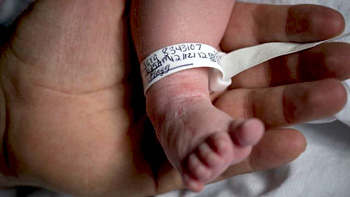London, Sep 28: Researchers have successfully carried out the process of giving birth to a baby using a controversial "three-parent baby" technique, and the boy has shown no signs of disease by far, the New Scientist, a Britain-based science magazine, reported on Tuesday.
 The five-month-old boy is the world's first baby to be born using the technique, which is aimed at assisting parents with rare genetic mutations to have healthy babies, said the magazine.
The five-month-old boy is the world's first baby to be born using the technique, which is aimed at assisting parents with rare genetic mutations to have healthy babies, said the magazine.
The boy's mother is a Jordanian who carries genes for Leigh syndrome. It is a fatal disorder affecting the developing nervous system. Around a quarter of her mitochondria have the disease-causing mutation. Leigh syndrome was responsible for the deaths of her first two children, according to the New Scientist.
John Zhang and his team at the New Hope Fertility Center in New York City provided help to the Jordanian couple using the "three-parent baby" technique.
There are different ways of implementing the technique. Britain has approved one of the methods called pronuclear transfer, which involves fertilizing both the mother's egg and a donor egg with the father's sperm. But the couple were against the destruction of two embryos, which would occur when using this method.
So Zhang and his team used another method called spindle nuclear transfer, which removed the nucleus from one of the mother's eggs and inserted it into a donor egg that had had its own nucleus removed. The resulting egg has the nuclear DNA from the mother and mitochondrial DNA from a donor. It was then fertilized with the father's sperm, according to the New Scientist.
Using the spindle nuclear transfer method, Zhang's team created five embryos, only one of which developed normally. That one was implanted in the mother and the child was born nine months later.
Since none of these aforementioned methods has been approved in the United States, the New Hope Fertility Center team had to carry out the whole procedure in Mexico, according to the New Scientist.
The team tested the boy's mitochondria, and found that less than one percent carried the mutation. It is usually deemed that problems will not show unless about 18 percent of mitochondria are affected.





Comments
Add new comment